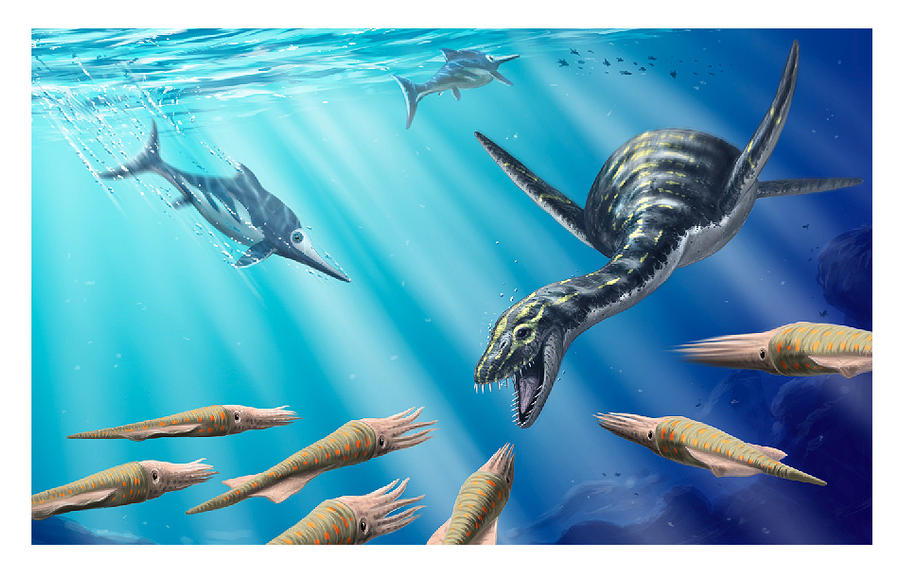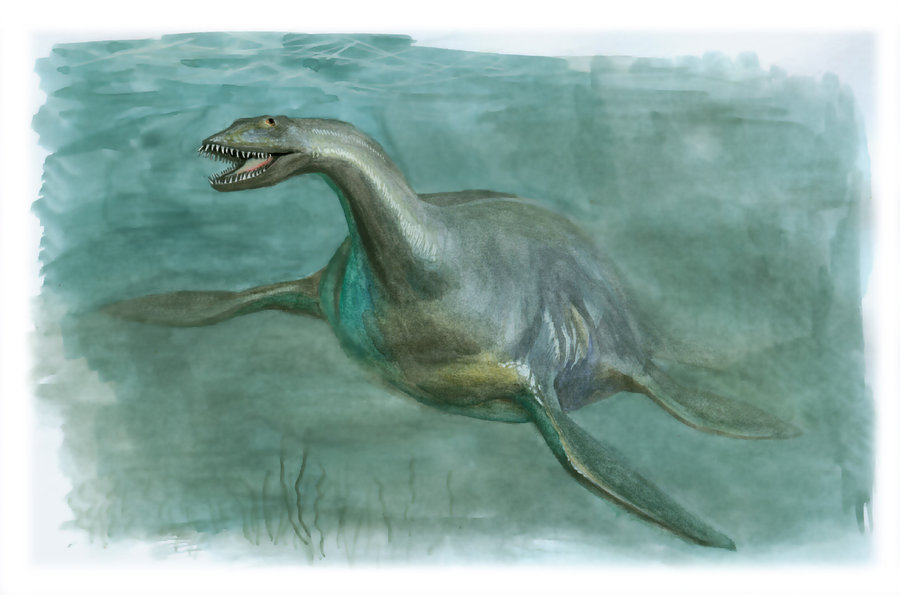[Recent Entries][Archive][Friends][User Info]
| Time | Text |
|---|---|
| 05:46 pm [Link] |
Cryptoclidus Криптоклиды (Cryptoclidus — "скрытая ключица") — род вымерших морских рептилий из отряда плезиозавров, датируемый поздним Юрским периодом (164—155 млн лет назад). Обитали на территории нынешней Англии, Франции и, возможно, Южной Америки. Целые скелеты Cryptoclidus euromerus находились в глинистых карьерах Оксфорда и Питерборо в Англии. Эта рептилия относилась к группе длинношеих плезиозавров и состояла в дальнем родстве с эласмозавром. Медлительный и сравнительно небольшой криптоклид, вероятно, нередко становился жертвой лиоплевродона и других крупных морских хищников. Криптоклид — это плезиозавр средних размеров, длиной до 4 метров, из которых шея с головой составляют 2 метра. Криптоклиды характеризуются длинной шеей, плоской головой и большим количеством острых зубов. Питались различной рыбой и беспозвоночными (например, аммонитами). Во время охоты он заплывал в крупный косяк рыб и, мотая из стороны в сторону своей двухметровой шеей, хватал жертв зубами. Cryptoclidus ( Cryptoclidus is estimated to have weighed about 8 tons. Its head was rather flattened, with eyes facing upward. The skull was broad and light, with jaws lined with about a hundred long, fine teeth, ideal for catching fish and squid. The internal nares were set forward, and the nostrils were relatively small. At up to 8 metres (26 ft) long, Cryptoclidus was a medium-sized plesiosaur. It had a neck that was up to 2 metres (6.6 ft) long that does not seem to have been very flexible. This probably kept its bulky body away from its small head so as not to alarm potential prey. It had four broad paddle-shaped limbs, with which it either "flew" through the water in wave-like undulating movements, or swam like a porpoise by moving upwards on two flippers and gliding back down again on the other two. Due to their seal-like body plan, small plesiosaurs such as Cryptoclidus have been depicted as amphibious animals instead of fully marine reptiles. Despite looking clumsy and cumbersome, in water it would have been relatively graceful, using all four limbs as paddles, to swim and hunt its prey. It may have laid eggs in sand, but this is conjectural. The fragile build of the head and teeth preclude any grappling with prey, and suggest a diet of small, soft-bodied animals such as squid and shoaling fish. Cryptoclidus may have used its long, intermeshing teeth to strain small prey from the water, or perhaps sift through sediment for buried animals. The size and shape of the nares and nasal openings have led Brown and Cruickshank (1994) to argue that they were used to sample seawater for smells and chemical traces.
Репродукции (1, 2, 3, 4, 5, 6):
Размеры тела в сравнении с человеком:
Ископаемые останки (1, 2, 3, 4, 5, 6):
|
| Reply: | |












